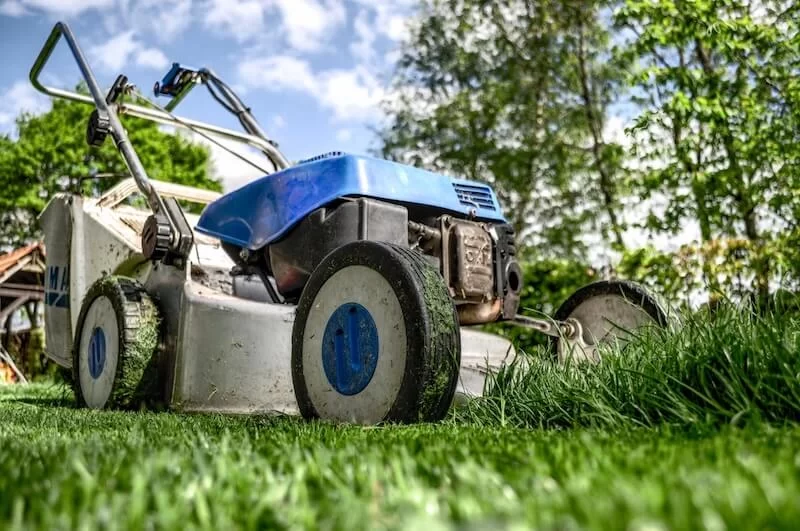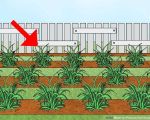
Lawn Care Tips for First-Time Homeowners: A Guide to a Beautiful Yard
Owning a home comes with a lot of exciting new responsibilities, one of which is maintaining your lawn. As a first-time homeowner, it can feel overwhelming to figure out how to care for your yard, especially if you didn’t have much experience with lawn care before. But don’t worry, with the right approach and a few simple tips, you can have a beautiful, lush lawn in no time. I’ve been there myself, and I’m here to share what I’ve learned over the years to help you avoid common pitfalls and get the most out of your outdoor space.
1. Understanding Your Lawn: Know What You’re Working With
The first step in lawn care is understanding your lawn. Not all lawns are created equal, and the type of grass you have will determine how to best care for it. In the United States, different regions have different climates, and those climates are home to various types of grass. For example, cool-season grasses like Kentucky Bluegrass or Fescue are more common in the northern states, while warm-season grasses like Bermuda or Zoysia thrive in the southern regions.
When I first bought my home, I didn’t realize that my lawn had a mixture of cool-season grass and some warm-season patches. It wasn’t until the summer heat hit that I saw part of my lawn drying up, and the other half seemed to be thriving. This was due to the different grass types needing different care routines. So, the first thing I did was identify the type of grass growing in my yard. You can do this by simply looking at the texture and color of your grass or getting a soil test to help determine the best maintenance routine.
2. Mowing: The Essential Regular Task
Mowing is one of the most important tasks in lawn care, but it’s not as simple as just cutting the grass whenever it looks too tall. The way you mow your lawn affects its health and appearance, so I quickly learned that a few key rules make all the difference.
2.1. Set the Right Mower Height
The height at which you mow your lawn is crucial. Cutting your grass too short can weaken it and make it more vulnerable to pests and disease. On the other hand, letting the grass grow too tall can cause it to become unruly and may lead to patchy areas. Most lawns do well when kept at about 2.5 to 3.5 inches tall, depending on the type of grass. The general rule I follow is to never remove more than one-third of the grass height at a time. That’s because cutting too much off in one go can stress the grass, making it harder for it to recover.
2.2. Mow When the Grass Is Dry
Another mistake I made early on was mowing my lawn when it was still wet from dew or recent rain. This leads to uneven cuts and can even damage the mower. So, now, I make sure to mow when the grass is dry. This helps the mower cut evenly, and the clippings are easier to handle. A dry lawn also reduces the risk of spreading fungal diseases.
2.3. Vary the Mowing Pattern
One tip that really helped me improve the overall appearance of my lawn was changing the mowing pattern every time I cut the grass. By alternating the direction I mow, I prevent the grass from developing a tendency to lean in one direction, which can lead to uneven growth patterns. This simple change has made a big difference in the evenness of my lawn.
3. Watering: When and How Much?
Watering is another key part of lawn care, but like mowing, it requires a bit of finesse. Overwatering and underwatering are both common mistakes I’ve seen many first-time homeowners make. I learned the hard way that it’s about finding that perfect balance.
3.1. Water Deeply, Not Frequently
At first, I was watering my lawn every day, thinking that the more water, the better. But it turns out that watering too frequently can lead to shallow roots. Shallow roots make your lawn more vulnerable to droughts. Instead, I now water my lawn deeply once or twice a week, allowing the water to penetrate deep into the soil. This encourages the grass to develop deep, strong roots that help it survive in tough conditions.
3.2. Early Morning is the Best Time to Water
After doing some research, I realized that the best time to water my lawn is early in the morning, just after the sun rises. This is when the temperatures are cooler, and there’s less wind, so the water doesn’t evaporate too quickly. Watering early also reduces the risk of fungal diseases, which can thrive in the humid environment created by evening watering.
4. Fertilizing: Giving Your Lawn the Nutrients It Needs
Fertilizing is one of those tasks that many homeowners overlook, but it can have a huge impact on the health and appearance of your lawn. When I first moved in, I didn’t realize that my lawn wasn’t getting the right nutrients. It looked okay, but it didn’t have that vibrant, rich green color I was hoping for. That’s when I learned that regular fertilizing is essential for maintaining a healthy lawn.
4.1. Choose the Right Fertilizer
The key to successful fertilizing is selecting the right type of fertilizer for your grass. There are different formulations for different types of grass and soil. I chose a slow-release nitrogen fertilizer, which gradually releases nutrients over time, providing steady growth without overwhelming the grass. It’s important to follow the manufacturer’s instructions carefully to avoid over-fertilizing, which can damage the lawn.
4.2. Timing Your Fertilizer Applications
Timing is everything when it comes to fertilizing. I learned that applying fertilizer at the wrong time of year can do more harm than good. For cool-season grasses, the best time to fertilize is in the fall and early spring. For warm-season grasses, late spring and early summer are the ideal times. I make sure to adjust my fertilizing schedule based on the type of grass and the local climate conditions.
5. Dealing with Weeds and Pests
One of the most frustrating parts of lawn care is dealing with weeds and pests. When I first noticed weeds creeping into my yard, I tried pulling them by hand, but that only worked for a little while. Eventually, I realized that I needed a more comprehensive approach to weed control. A combination of pre-emergent weed control and spot treatments for existing weeds worked wonders. You can buy weed control products that are specifically designed for your type of grass.
Pests are another issue I had to address. Grubs, ants, and other insects can wreak havoc on your lawn. I found that regularly inspecting my lawn for signs of pests and using natural pest control methods, like introducing beneficial insects, helped keep the bug population under control.
6. Aerating Your Lawn: The Secret to Stronger Grass
Aeration is something I didn’t consider when I first started taking care of my lawn, but once I learned about it, I realized how beneficial it is. Aerating your lawn helps to improve soil compaction and allows air, water, and nutrients to reach the roots more effectively. I rented an aerator one spring and was amazed at how much better my lawn looked afterward.
Aerating is especially helpful if you have clay-heavy soil or if your lawn experiences heavy foot traffic. I recommend aerating at least once a year, ideally in the early spring or fall when the grass is actively growing.
Taking care of your lawn as a first-time homeowner doesn’t have to be overwhelming. With a little bit of knowledge and effort, you can achieve a beautiful, healthy yard that you’ll be proud of. And if you’re ever unsure, don’t hesitate to reach out to professionals who can help guide you through the process.








